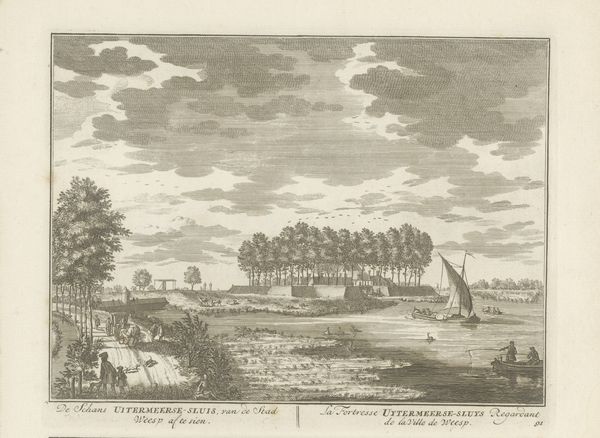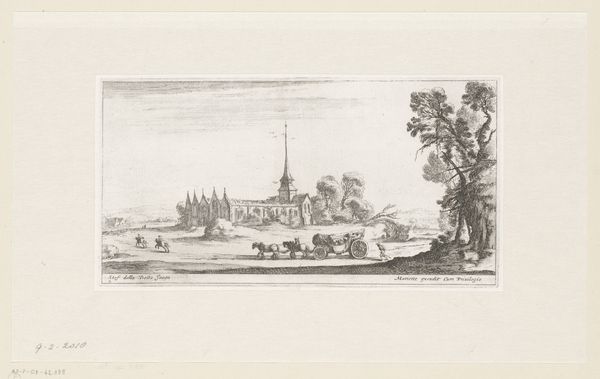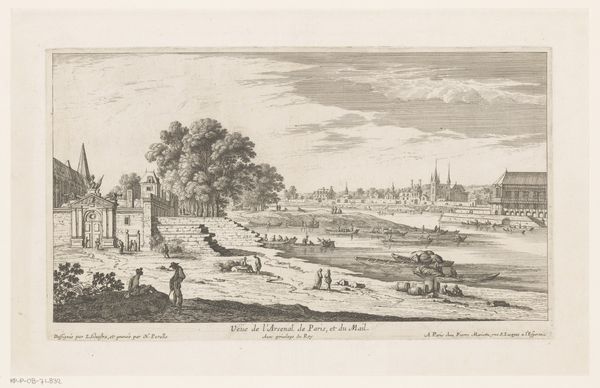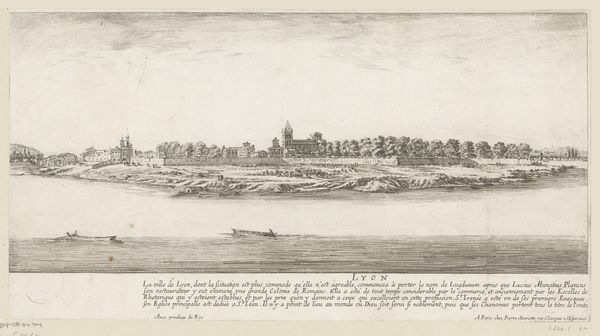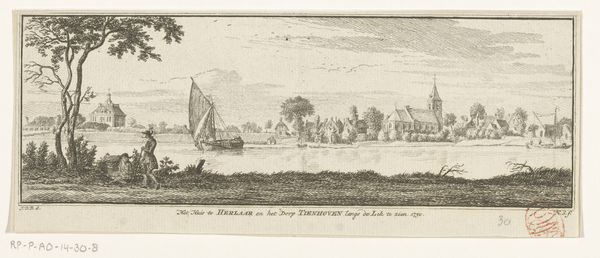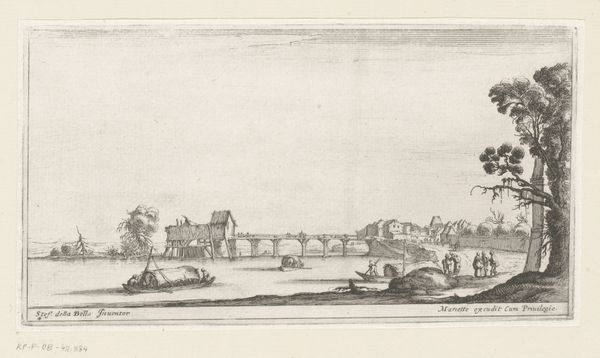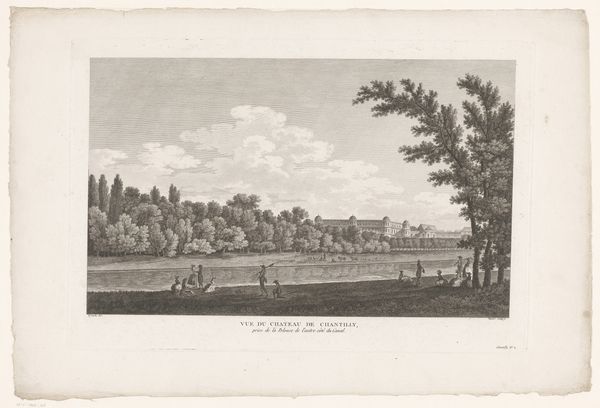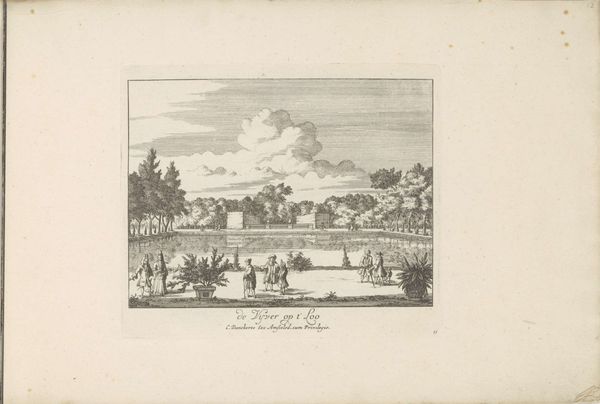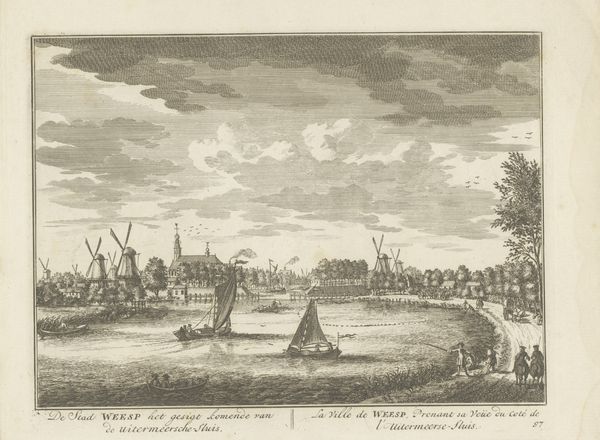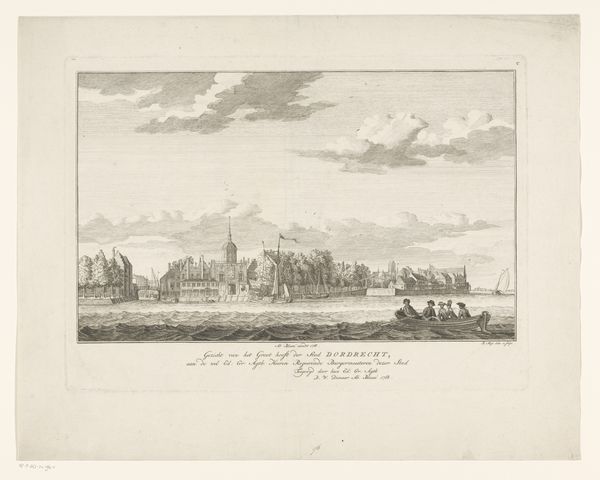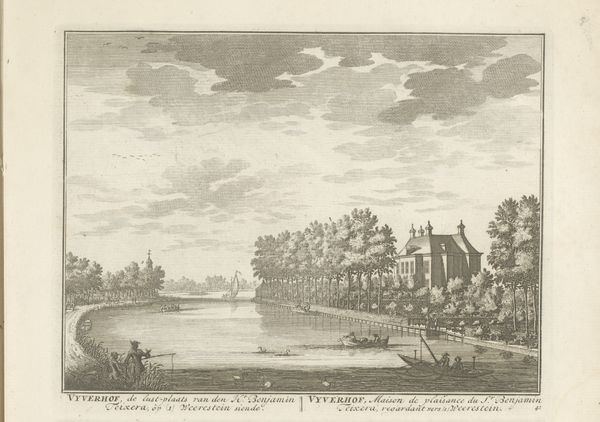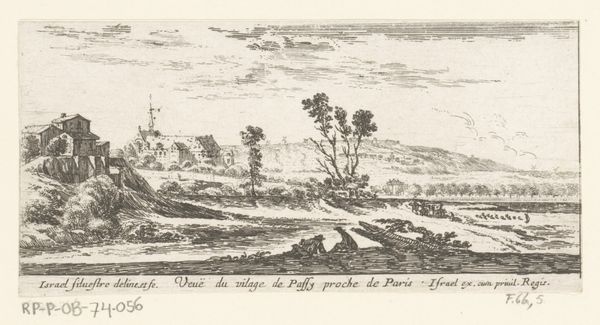
Dimensions: height 169 mm, width 115 mm
Copyright: Rijks Museum: Open Domain
Editor: This print, "View of Venlo from the Maas," was created between 1745 and 1792 by Hendrik Spilman. It's a cityscape viewed across a river, created through engraving. The mood feels very serene and observant. What do you see in this piece? Curator: What immediately strikes me is how the city is presented, almost like a sacred space. The tall church tower pierces the sky, becoming a focal point that communicates a sense of stability and timelessness, key values for the society then. Editor: Interesting, so the church isn't just an architectural detail but also a symbol? Curator: Precisely. Consider how the river acts as a reflective surface, mirroring the city. This mirroring could signify a desire for order and harmony. Do you notice any other recurring shapes or motifs? Editor: I see a lot of horizontal lines: the riverbank, the skyline. Curator: These horizontal lines create a sense of groundedness. Now think about the figures in the foreground. They're quite small in relation to the city. What might this signify? Editor: Maybe the importance of the city over the individual? It feels like the city's story is considered more significant. Curator: That's a very insightful observation! It invites reflection on the power structures and values of that time, which is why prints like this served as both documentation and instruments of cultural memory. What do you think about the function of prints like this one, today? Editor: I never thought about it like that before. Now, I understand how much encoded information these kinds of landscape images contain about the values of that time. Curator: Indeed. Each element carries historical, cultural, and even psychological weight, waiting to be interpreted.
Comments
No comments
Be the first to comment and join the conversation on the ultimate creative platform.

